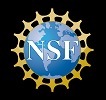Develop » Participate in a Webinar
About SPARC webinars
Two key challenges in integrating remote sensing methods and geospatial analysis into archaeological research are keeping up with recent technological developments across a variety of specialist domains and knowing which technology or technologies will be appropriate to each archaeological situation. SPARC will be conducting two webinar series to help researchers address these challenges and start thinking about the use of these technologies in their own research. The first series of webinars will provide information on recent developments in geospatial technologies, focused on their potential archaeological applications. The second series of webinars will focus on technology choice, using case studies to discuss the decisions made at different points in the project planning, data acquisition, data processing, and publication and archiving process.
Eligibility Requirements
Webinars are open to anyone.
Webinar Series
January 2014:
Multi-scalar 3D documentation. Linking up ALS, TLS, and Object Scanning.
There are currently a number of technologies that provide for the detailed 3D documentation of archaeological objects, features, sites and landscapes. We use the phrase “high density survey and measurement” (or HDSM) as a container for all of these. HSDM includes “laser” scanning – a term which refers to aerial systems using pulsed lasers (often called LiDAR) and terrestrial systems using pulsed time-of-flight and phase-shift laser scanners, structured light scanners, and other technologies. HSDM also includes aerial systems using photogrammetric methods and terrestrial systems using what has been termed “close range photogrammetry” or “structure from motion”. Each of these methods independently provides many valuable sources of data for archaeologists and heritage professionals. They become even more powerful when seen as an integrated set of methods – however – each has its own data structures and practices. Integrating these has a number of technological challenges but when accomplished yields significant rewards. Of particular note is that the use of the suite in an integrated manner allows the multi-scalar study of the past, providing rich contextualization at all levels.
- Date: 29 January 2014
- Time: 14:00 CST
- Place: Webinar Meeting (Blackboard Collaborate)
- Speaker: Fred Limp (University Professor, Dept. of Geosciences, U. of Arkansas)
Download the slides and narration:
February 2014:
From photos to models. Strategies for using digital photogrammetry in your project.
Photogrammetry has rapidly gained popularity in archaeology as a quick, easy, and low-cost method for creating 3D models of objects, structures, sites, and landscapes. The combined effect of relatively low-cost hardware and software, increased computing power, and greater ease of data collection requirements make the method a very attractive option. So is close-range/structure from motion photogrammetry the right solution for your needs? This webinar serves to provide the basic knowledge needed to answer this question, including details on data capture and processing, product generation, and dissemination. The pros and cons of close-range photogrammetry will be discussed for a variety of project types, as well as recommendations for creating the most accurate and useful models for your applications. Analysis including documentation, 3D spatial analysis, change detection, classification, and site and feature prospecting will be covered.
- Date: 26 February 2014
- Time: 11:00 CST
- Place: Webinar Meeting (Blackboard Collaborate)
- Speakers: Adam Barnes and Katie Simon (CAST, University of Arkansas)
October 2014: Archaeological Geophysics - Sensor Selection and Site Suitability
Speaker: Eileen Ernenwein (East Tennessee State University)
- Date: 17 October 2014
- Time: 13:00 EDT
- Place: http://tinyurl.com/psf3l44
Archaeological geophysics includes the use of ground-penetrating radar (GPR), electromagnetic induction (EMI), electrical resistivity, and magnetometry to detect buried features. Many archaeologists are interested in using geophysics but are unsure if their site is suitable and which methods would be best. Is the site a good candidate for geophysical survey? Which methods should be used? How deep down can features be detected? How long will it take? This webinar presents background information on commonly used geophysical methods and a step-by-step approach to answering these and related questions.
- Click here download a video of the presentation as a mp4
- Click here download the audio of the presentation as a mp3
- Click here to download a pdf of the presentation slides




